
We’ve already covered the top video editors for Linux.
However, that list contained some non-open source software as well, which gave us an idea to make a separate article featuring only open source video editors.
We’ve also mentioned the platforms supported by these video editors, which should be helpful for readers not using Linux.
Note: This list is in no particular order of ranking. Pick what suits you the best.
1. Kdenlive
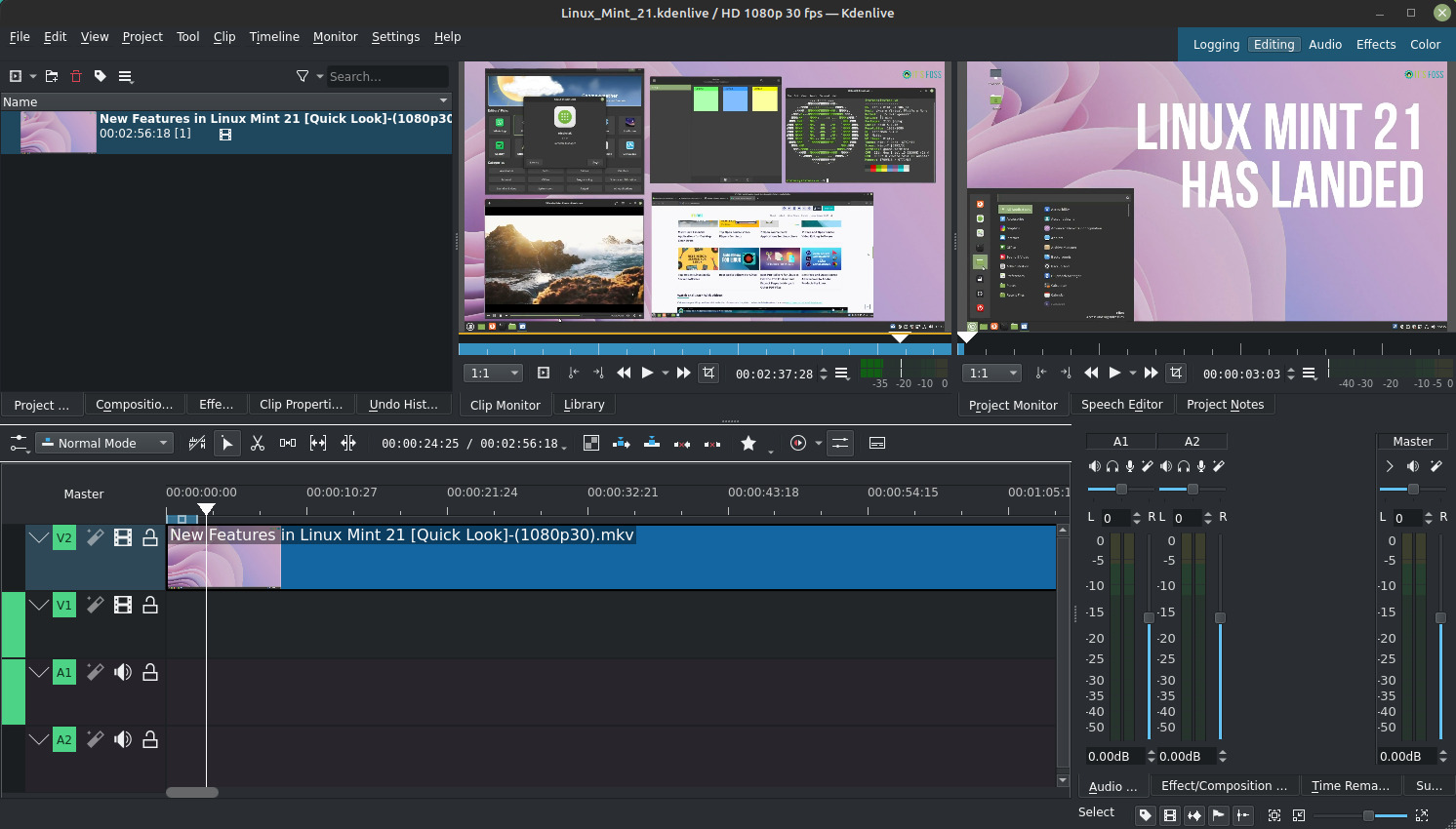
Key Features:
- Multi-track Video Editing.
- All kinds of audio/video formats supported with the help of FFmpeg libraries.
- 2D title maker.
- Customizable Interface and shortcuts.
- Proxy editing to make things faster.
- Automatic backup.
- Timeline preview.
- Keyframeable effects.
- Audiometer, Histogram, Waveform, etc.
- Color correction, audio adjustments, and many more effects and transitions.
- Additional online add-ons to improve performance.
Platforms available on: Linux, macOS, and Windows.
Kdenlive is a free and open-source video editor available for Windows, macOS, and Linux distros.
It is one of the most versatile open-source video editors available.
If you are on a Mac, you can download the dmg file to install it (only for Intel-based Macs). There’s an executable package for Windows users as well.
For Linux users, you should find it in the software center or you can opt for the AppImage/Flatpak package.
If you’re new to Linux, you might want to follow our guides to use AppImage and set up Flatpak to get started.
2. OpenShot
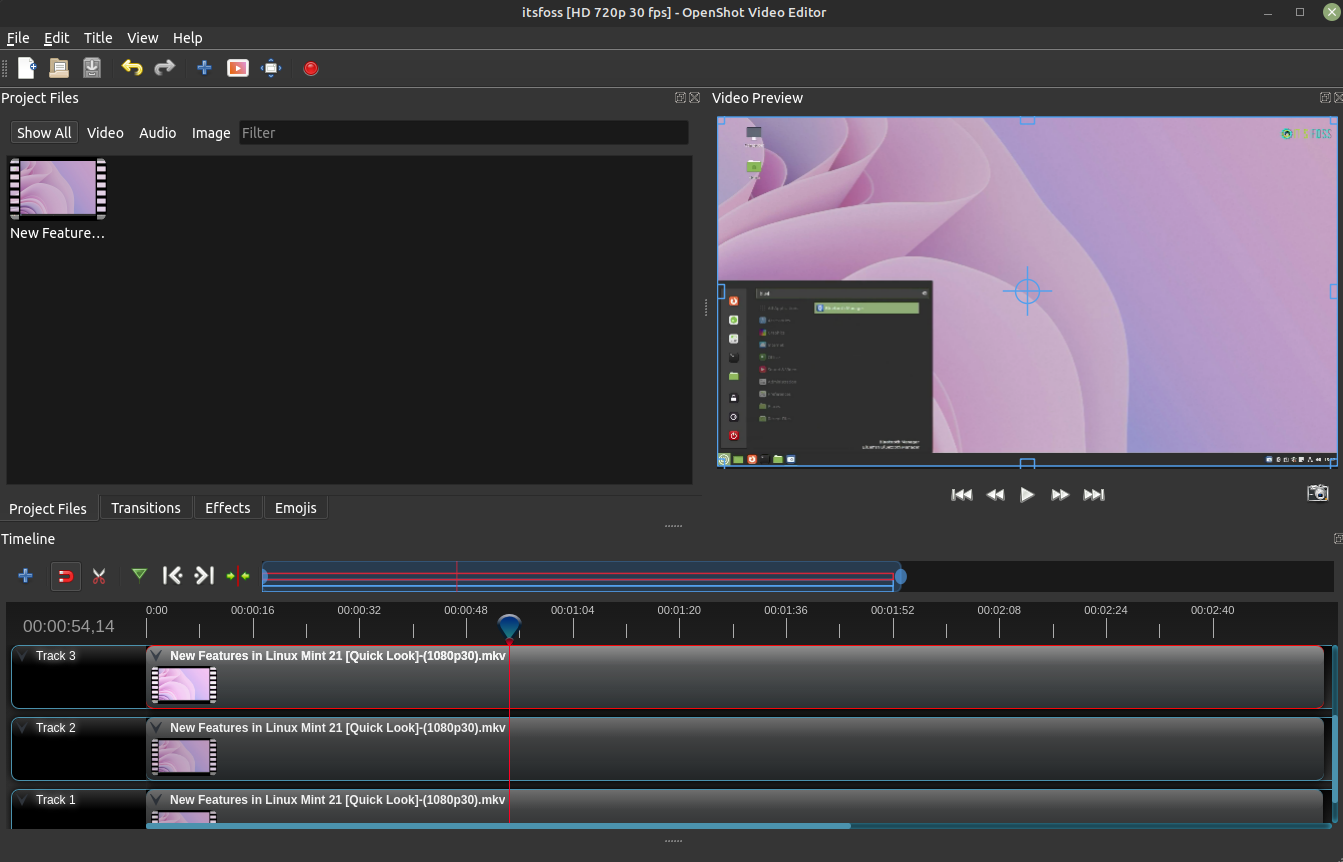
Key Features:
- Almost all video/audio formats supported.
- Keyframe animation framework
- Multi-track support.
- Desktop integration (drag and drop support).
- Video transition with real-time previews.
- 3D animated titles and effects.
- Advanced timeline with drag/drop support, panning, scrolling, zooming, and snapping.
Platforms available on: Linux, macOS, and Windows.
OpenShot is a quite popular open-source video editor.
The user interface may not be its strongest point but it offers you the essential features for a variety of editing tasks.
Similar to Kdenlive, it only supports the Intel-based Mac systems along with Windows and Linux.
While you can find it in the software center, you can choose to download its AppImage file or set it up using the PPA as instructed on the official website.
3. VidCutter
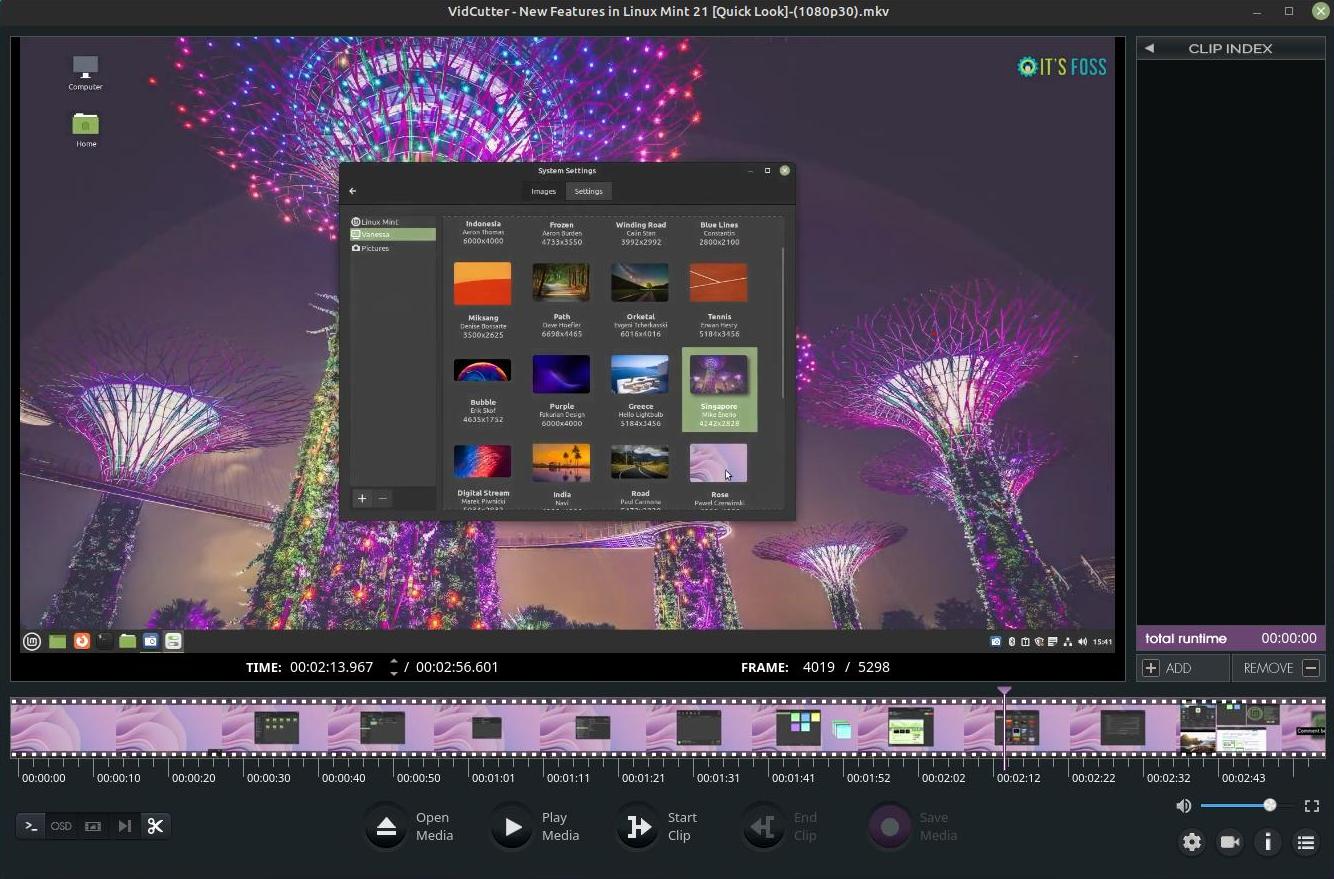
Key Features:
- Keyframes viewer
- Cut, Split, and add different clips
- Major audio/video formats supported
Platforms available on: Linux, macOS, and Windows.
VidCutter is an open-source video editor for basic tasks. It does not offer many features, but it works for everyday tasks like clipping or cutting.
For Linux, it is available on Flathub along with the software center. And, for Windows and macOS, you get an executable file and the DMG package respectively. You can also utilize the Homebrew package manager to install it on an Intel-powered Mac.
4. Shotcut
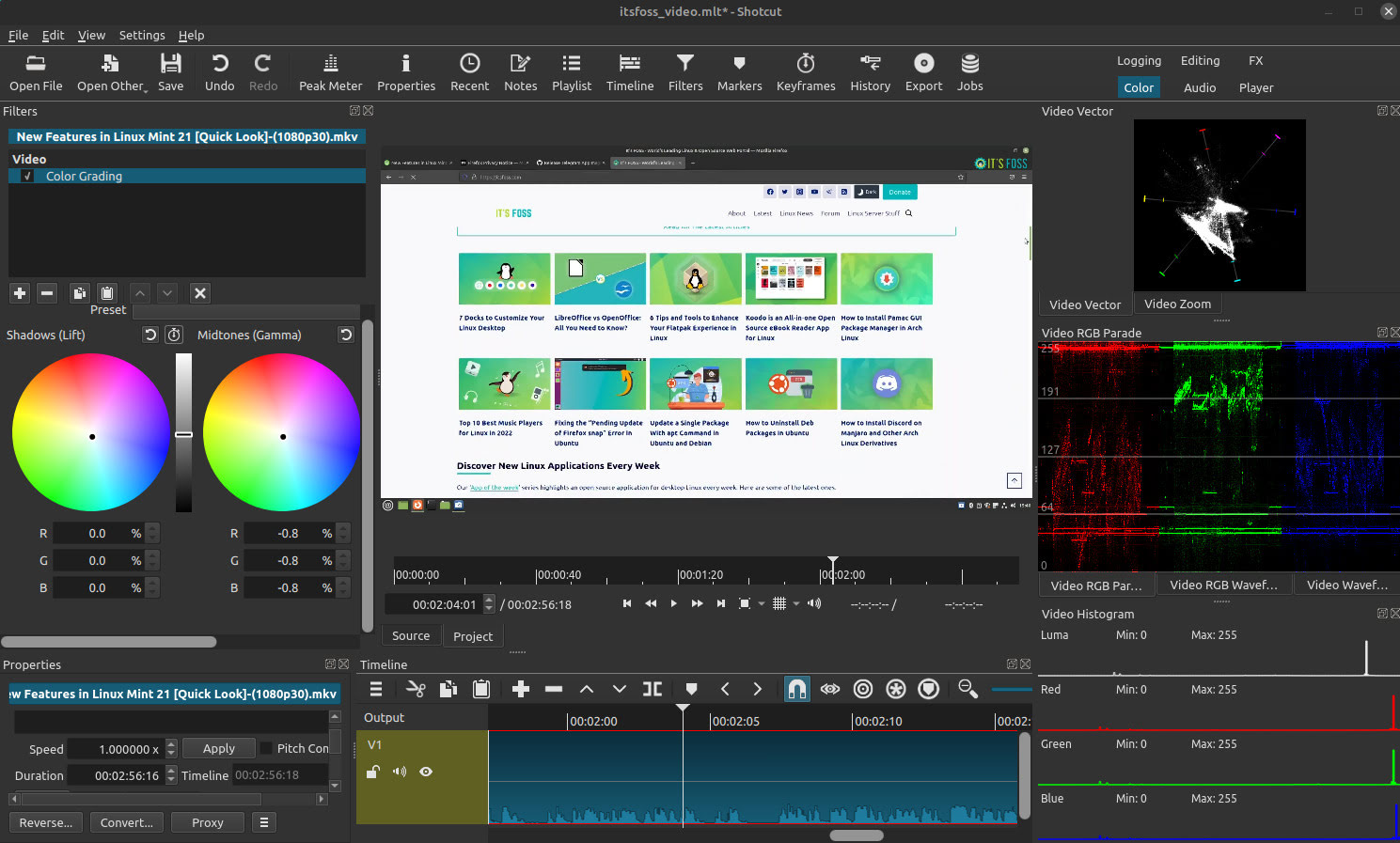
Key Features:
- Supports almost all major audio/video formats with the help of FFmpeg libraries.
- Multiple dockable/undockable panels.
- Intuitive UI.
- JACK transport sync.
- Stereo, mono, and 5.1 surround support.
- Waveform, Histogram, etc.
- Easy to use with dual monitors.
- Portable version is available.
- Webcam capture.
- Record from within the timeline for use-cases like voice overs.
- 4K Support.
Platforms available on: Linux, macOS, and Windows.
Shotcut is yet another popular open-source video editor available across multiple platforms. It features a friendly interface to work on.
When considering the features, it offers all types of tools and utilities you will ever need (from color correction to adding transitions).
You can install it through the software center or opt to download the AppImage. It also provides a portable version for Windows and Linux.
Interestingly, it is one of the few open-source editors that can run on Apple Silicon powered Mac devices.
5. Flowblade
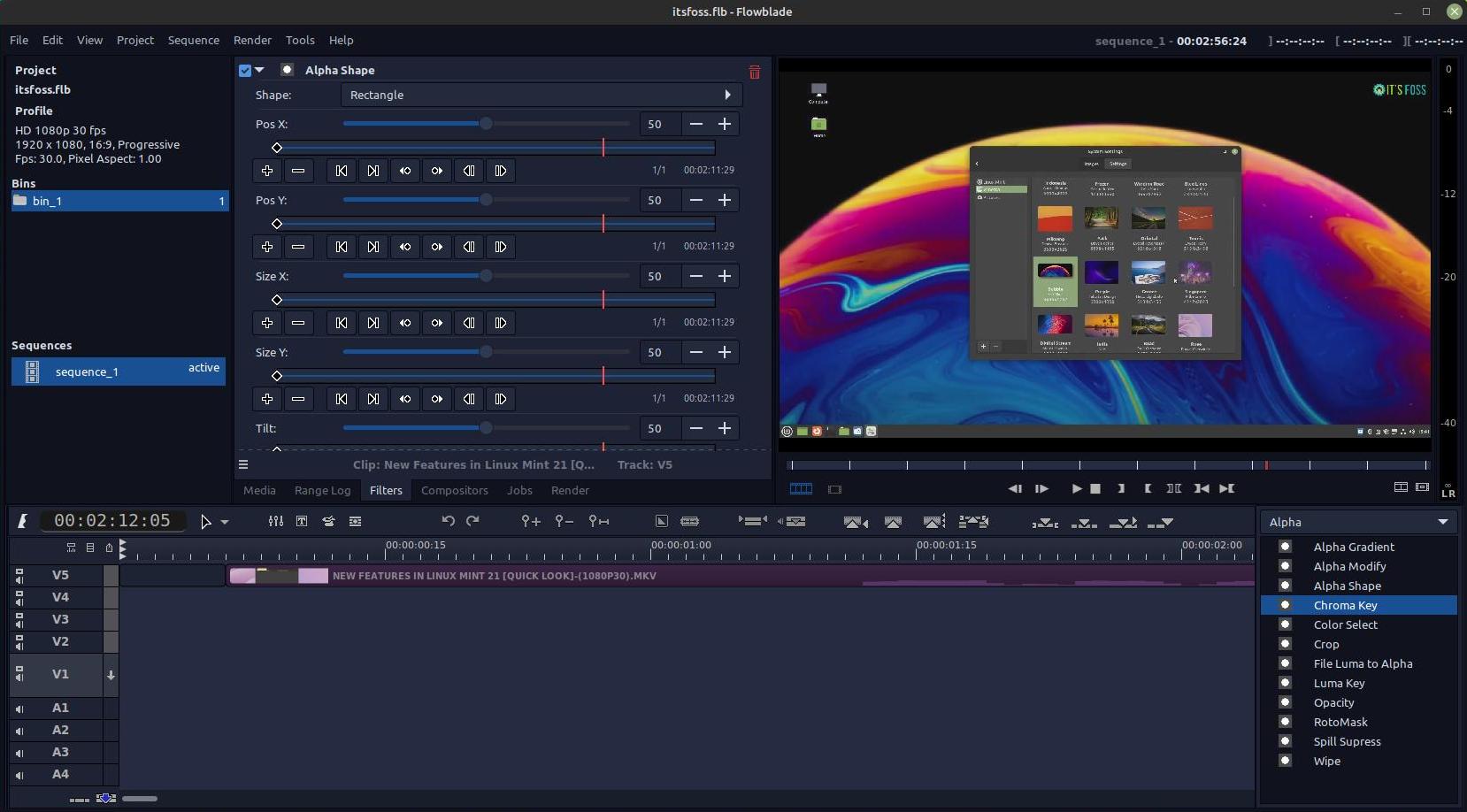
Key Features:
- Advanced timeline control
- Multi-track editing
- G’mic tool
- All major audio/video formats supported with the help of FFMpeg libraries
Platforms available on: Linux
Flowblade is an intuitive open-source video editor exclusively available for Linux.
Yes, it is a bummer that we do not have cross-platform support for this.
However, if you are using a Linux distro, you can install it from the software center, get the Flatpak package, or download the .deb file from its official website.
6. Avidemux
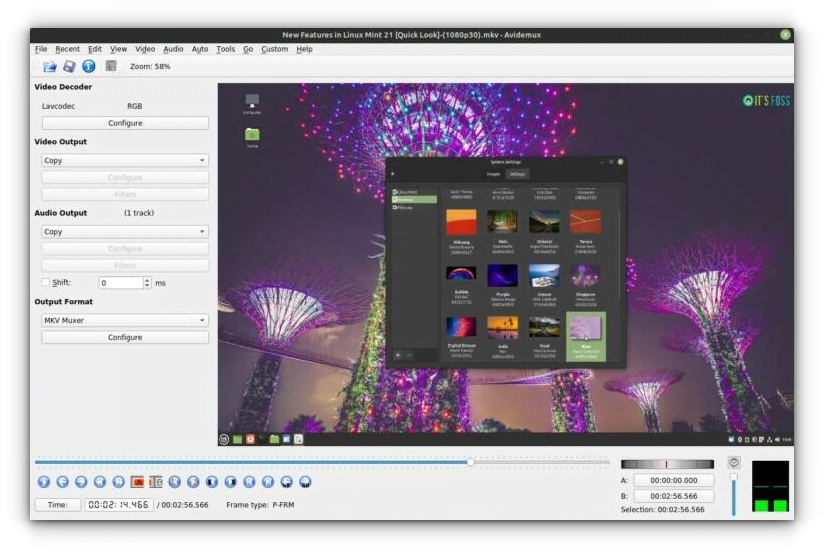
Key Features:
- Trim
- Cut
- Filter support
- Major video format supported
Platforms available on: Linux, BSD, macOS, and Windows.
If you are looking for a basic cross-platform open source video editor, this will be one of our recommendations.
You just get the ability to cut, save, add a filter, and perform some other basic editing tasks. Their official SourceForge page might look like it has been abandoned, but you can check out its GitHub page for more details.
7. Pitivi
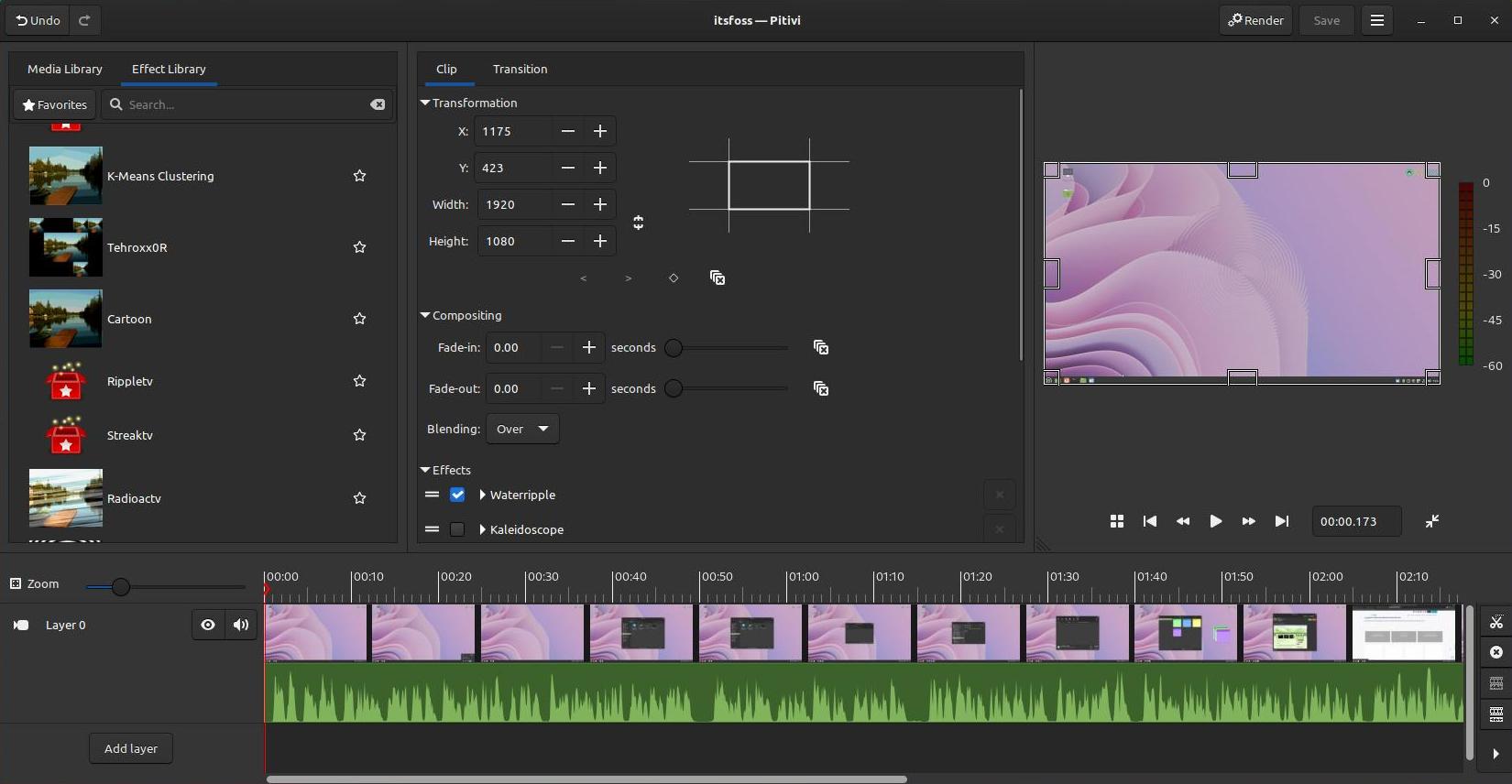
Key Features:
- All major video formats supported using GStreamer Multimedia Framework.
- Advanced timeline independent of frame rate.
- Animated effects and transitions.
- Audio waveforms.
- Real-time trimming previews.
- Automated project backups.
- Plugins Support.
- Hardware-accelerated and touch-capable user interface.
- Best integration with GNOME.
Platforms available on: Linux
A straightforward video editor exclusively available for Linux. The UI is user-friendly and the features offered will help you perform some advanced edits.
You can install it using the Flatpak package or find it in the software center.
8. Blender

Key Features:
- VFX.
- Modeling tools.
- Animation tools.
- Draw in 2D or 3D.
- Several advanced features.
Platforms available on: Linux, macOS, and Windows.
Blender is an advanced 3D creation suite. And, you get all the powerful abilities for free (and while being open source).
It is perfectly suitable for professionals working in the 3D designing field.
While you can use it to make some video editors, Blender is not a solution for every user. Still, it is one of the best open-source tools available for Windows, macOS, and Linux. You can also find it on Steam to install it.
9. Cinelerra GG Infinity
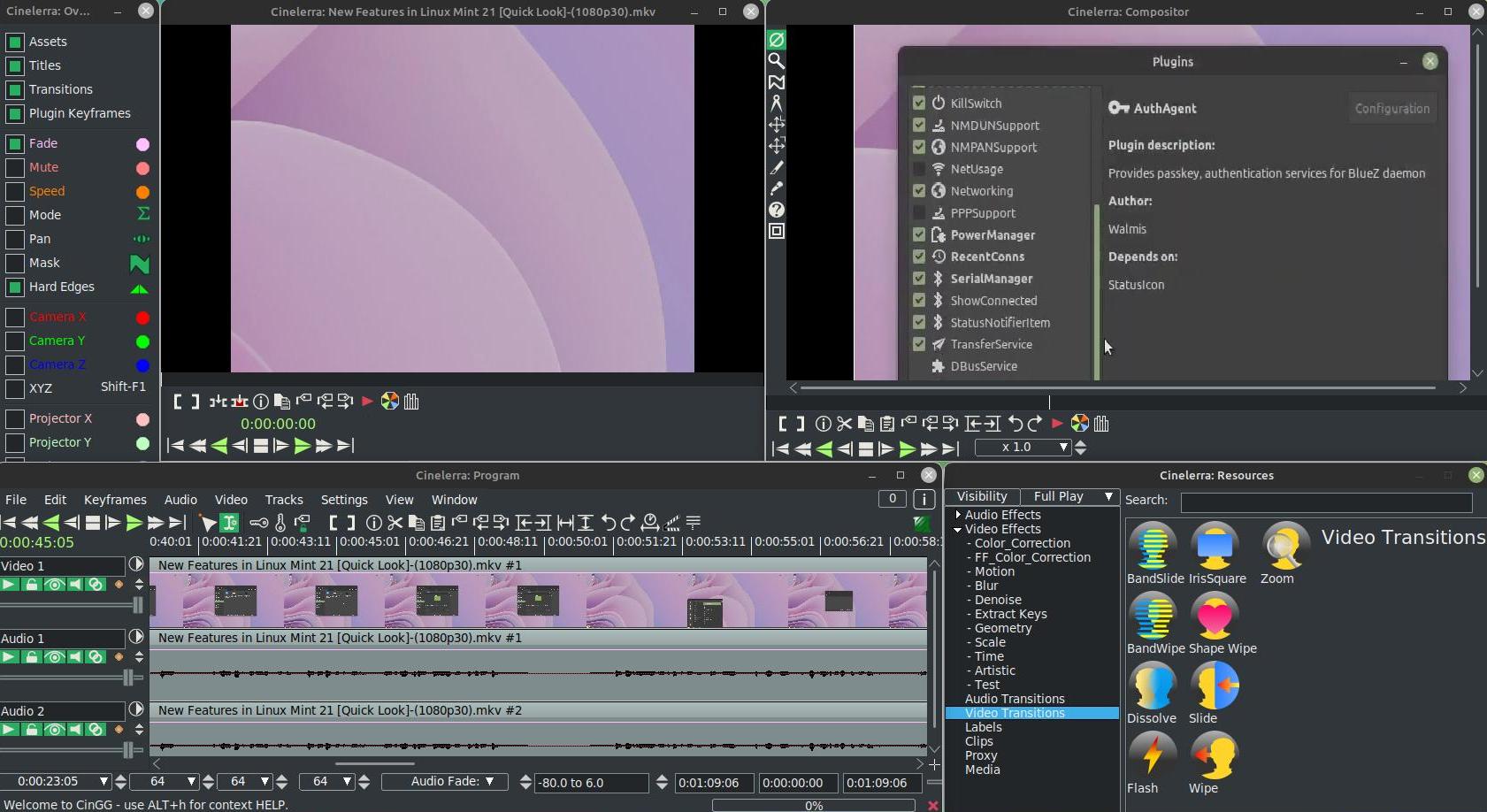
Key Features:
- Advanced timeline.
- Motion tracking support.
- Video stabilization.
- Audio mastering.
- Color correction.
- Hardware acceleration.
- Allows background rendering over a network with several connected computers.
- HiDPI 4K Monitor Support.
- Keyframe Support.
Platforms available on: Linux
Cinelerra is a quite popular open-source video editor. However, it has several branches (in other words – different versions). I am not sure if that is a good thing, but you get different features (and abilities) on each of them.
Cinelerra GG is the most actively maintained edition, with new features constantly added. And, the original edition hasn’t been updated for years now. However, it still works as a stable edition with several essential features.
You will not find this in the repositories. So, head to its official website to download the AppImage or any other supported package.
10. NATRON
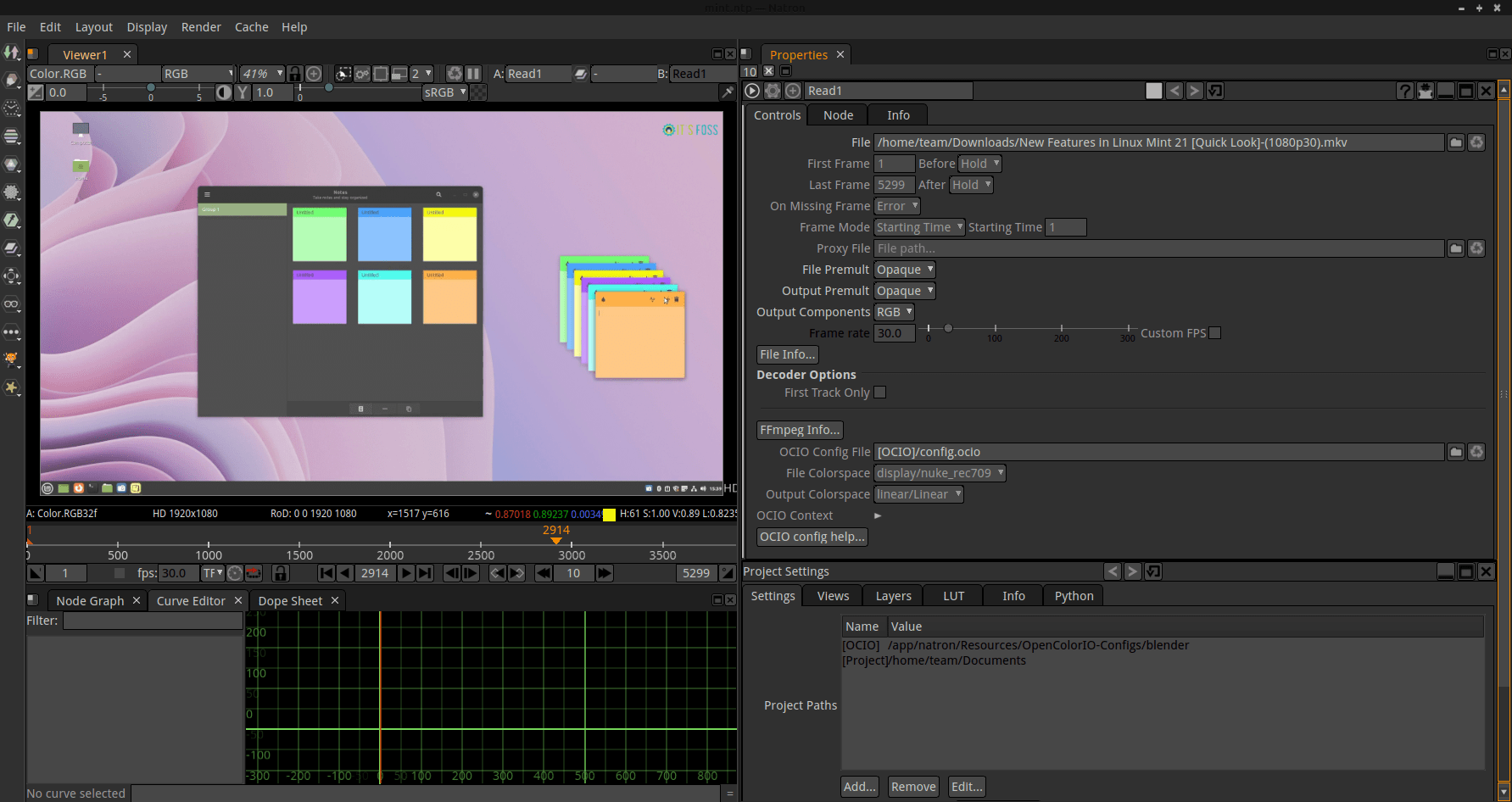
Key Features:
- VFX.
- Powerful Tracker.
- Keying tools for production needs.
- Shadertoy and G’mic tools.
- OpenFX plugin support.
- GPU and Network Rendering Capability.
- Community Plugins.
Platforms available on: Linux, macOS and Windows.
If you are into VFX and motion graphics, NATRON is an excellent alternative to Blender. Of course, to compare them for your usage, you will have to try them.
You can find installers for Windows and Intel-based Mac. So, it is pretty easy to get it installed. For Linux, you can find it in the software center or download a package from its GitHub page.
Explore its GitHub page for more information.
11. LiVES
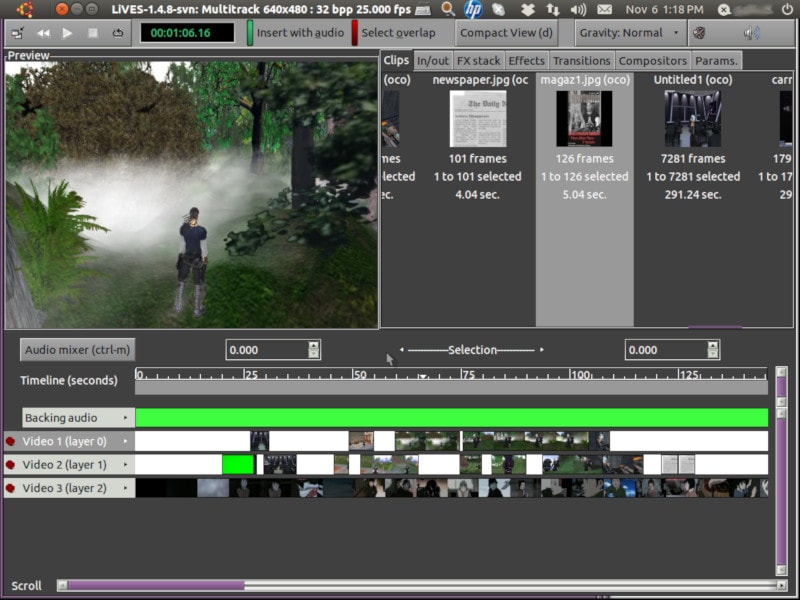
Key Features:
- Frame and sample-accurate editing.
- Edit video in real-time.
- Can be controlled using MIDI, keyboard, Joystic
- Multi-track support.
- VJ keyboard control during playback.
- Plugins supported.
- Compatible with various effects frameworks: projectM, LADSPA audio, etc.
Platforms available on: Linux. Support for Windows will be added soon.
LiVES is a fascinating open-source video editor. You can find the code on GitHub. It will soon be available for Windows, but it has been more than 2 years for the wait.
For Linux, you can find it in the software center.
Wrapping Up
So, now that you know about some of the most popular open-source video editors available, what do you think about them?
Are they good enough for your professional requirements? Did we miss any of your favorite open-source video editors that deserved mention?
If you are an experienced and professional video editor, I would like to hear your opinion on how good these open-source video editors are for the experts.

